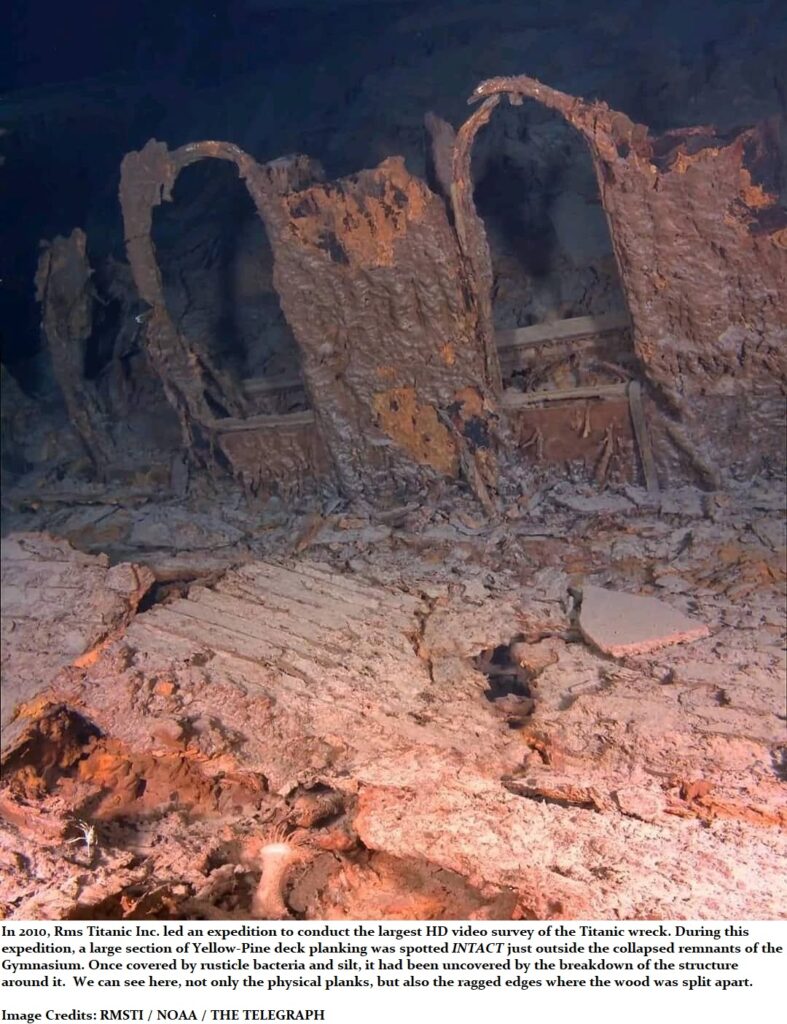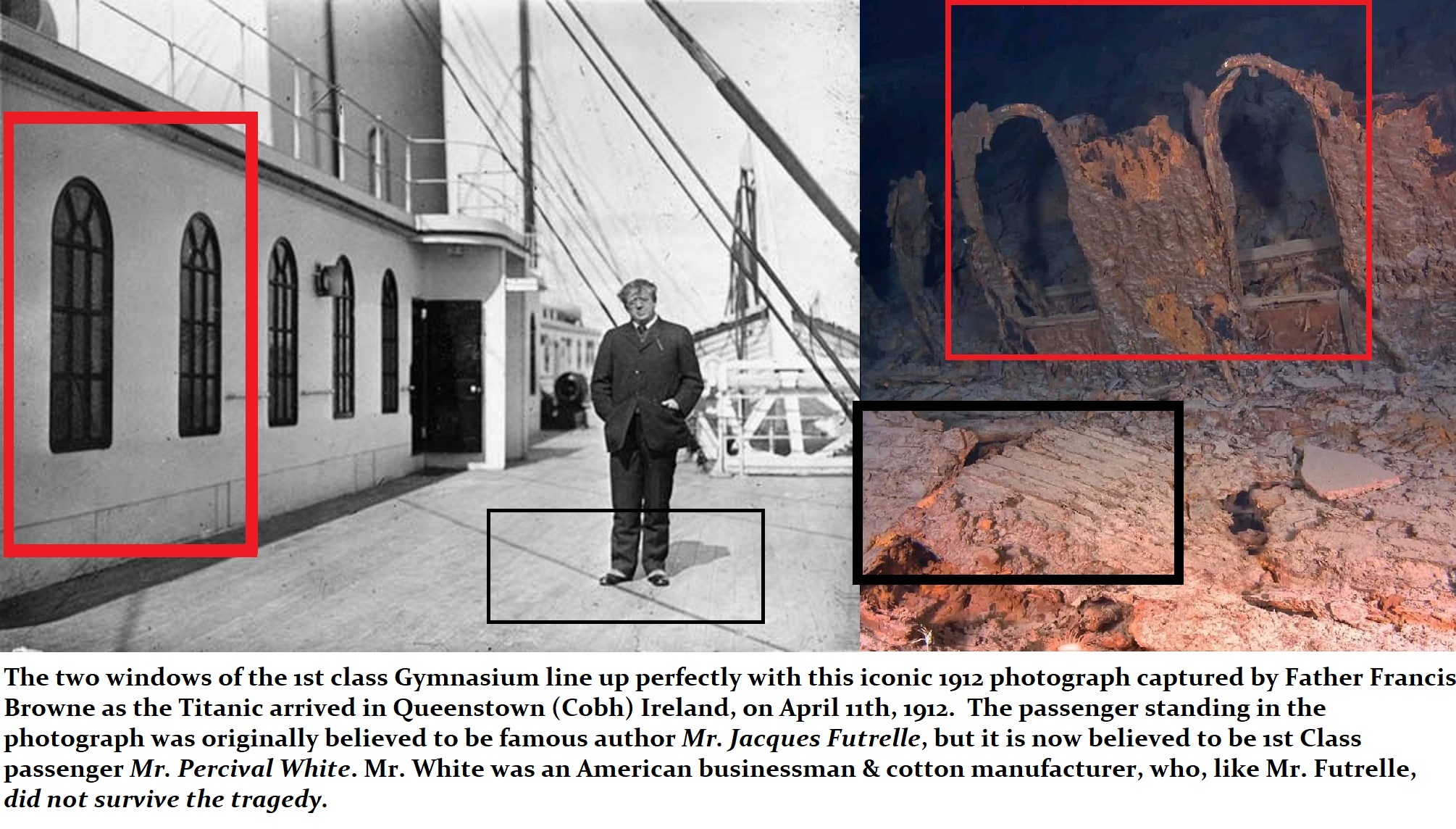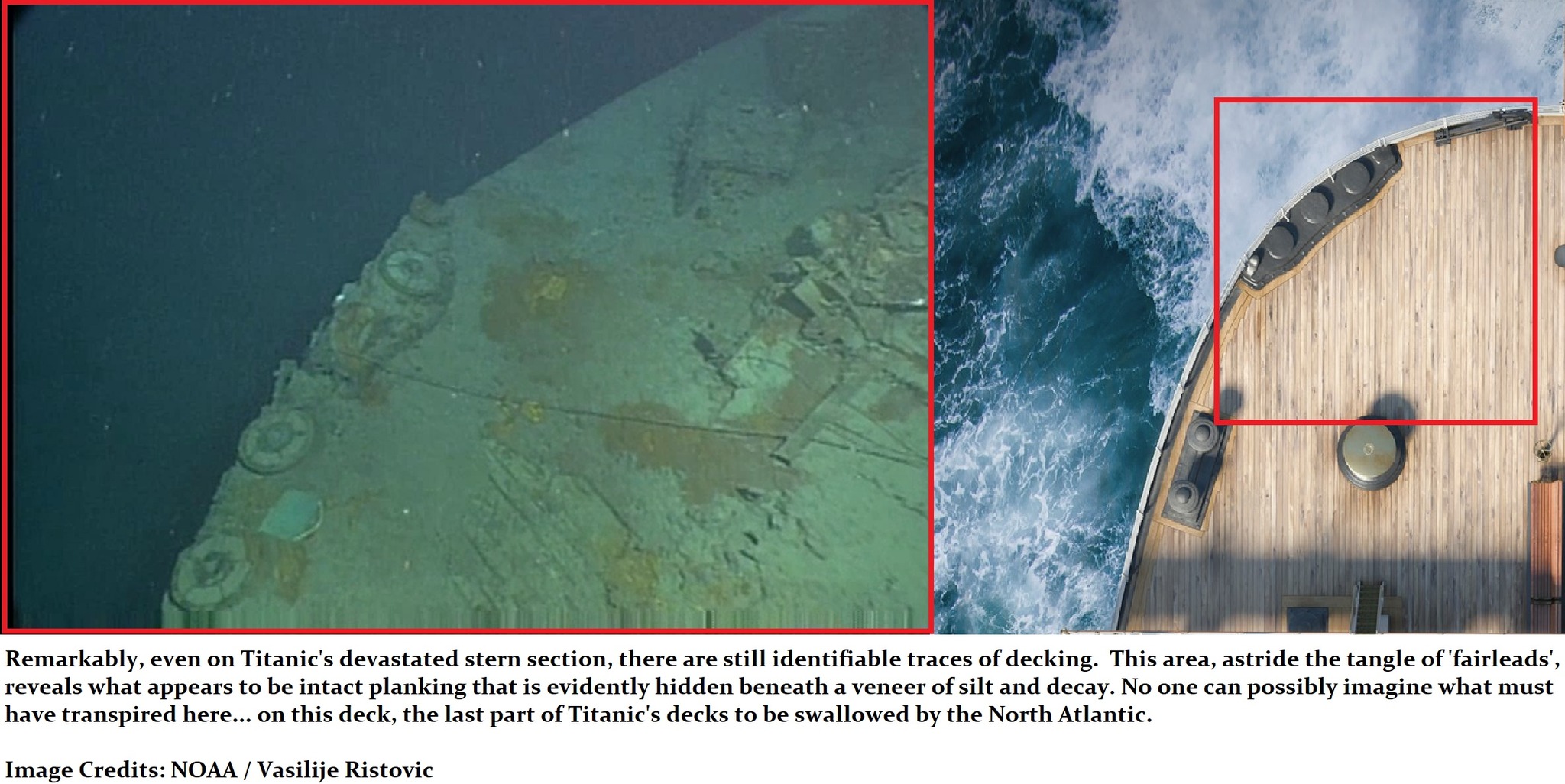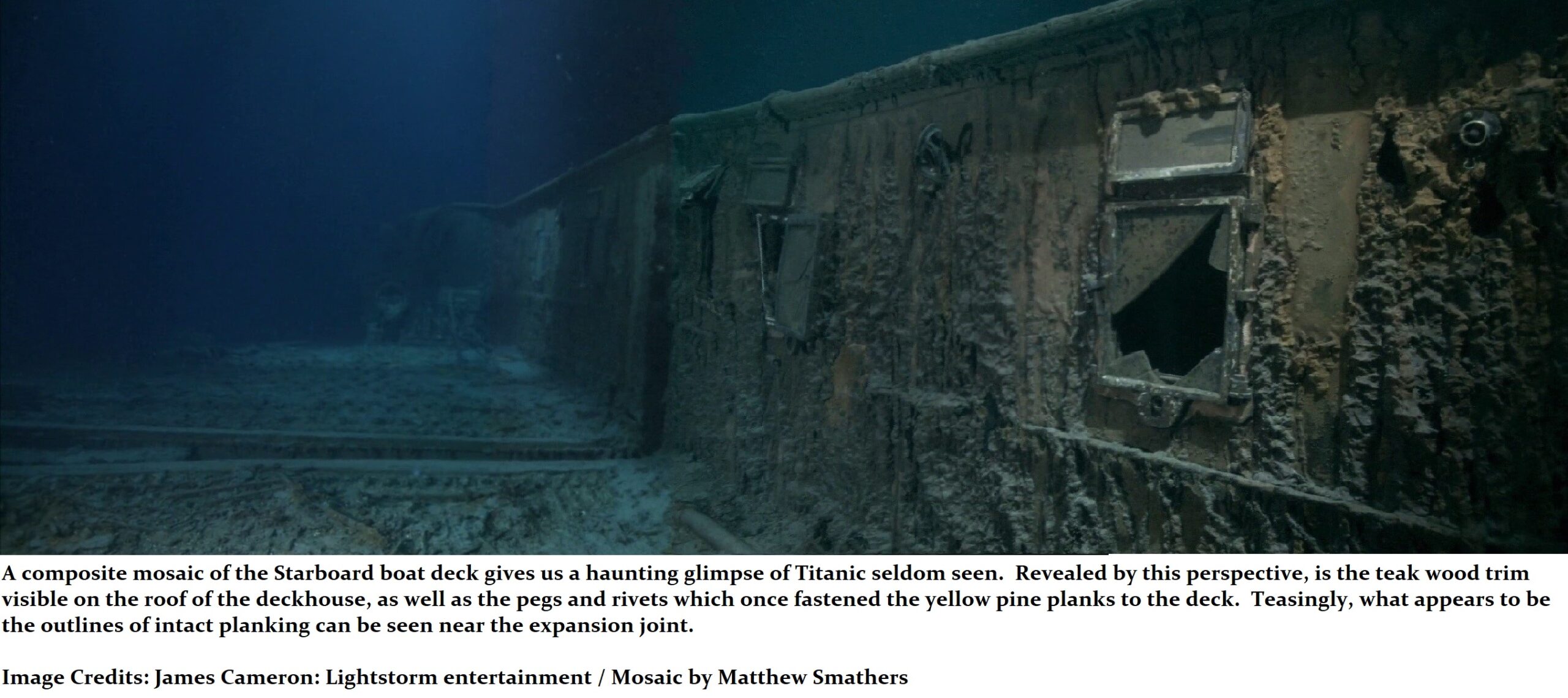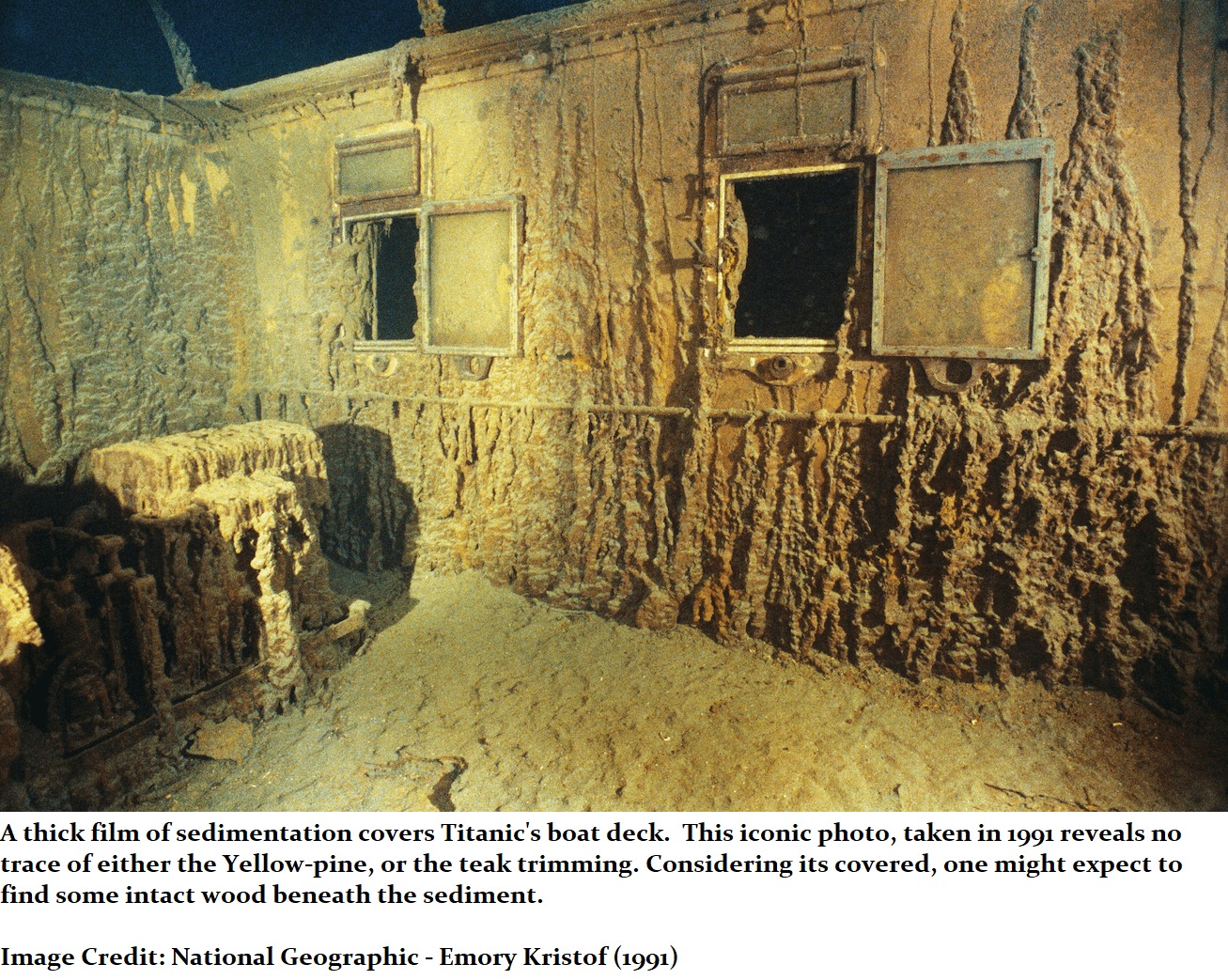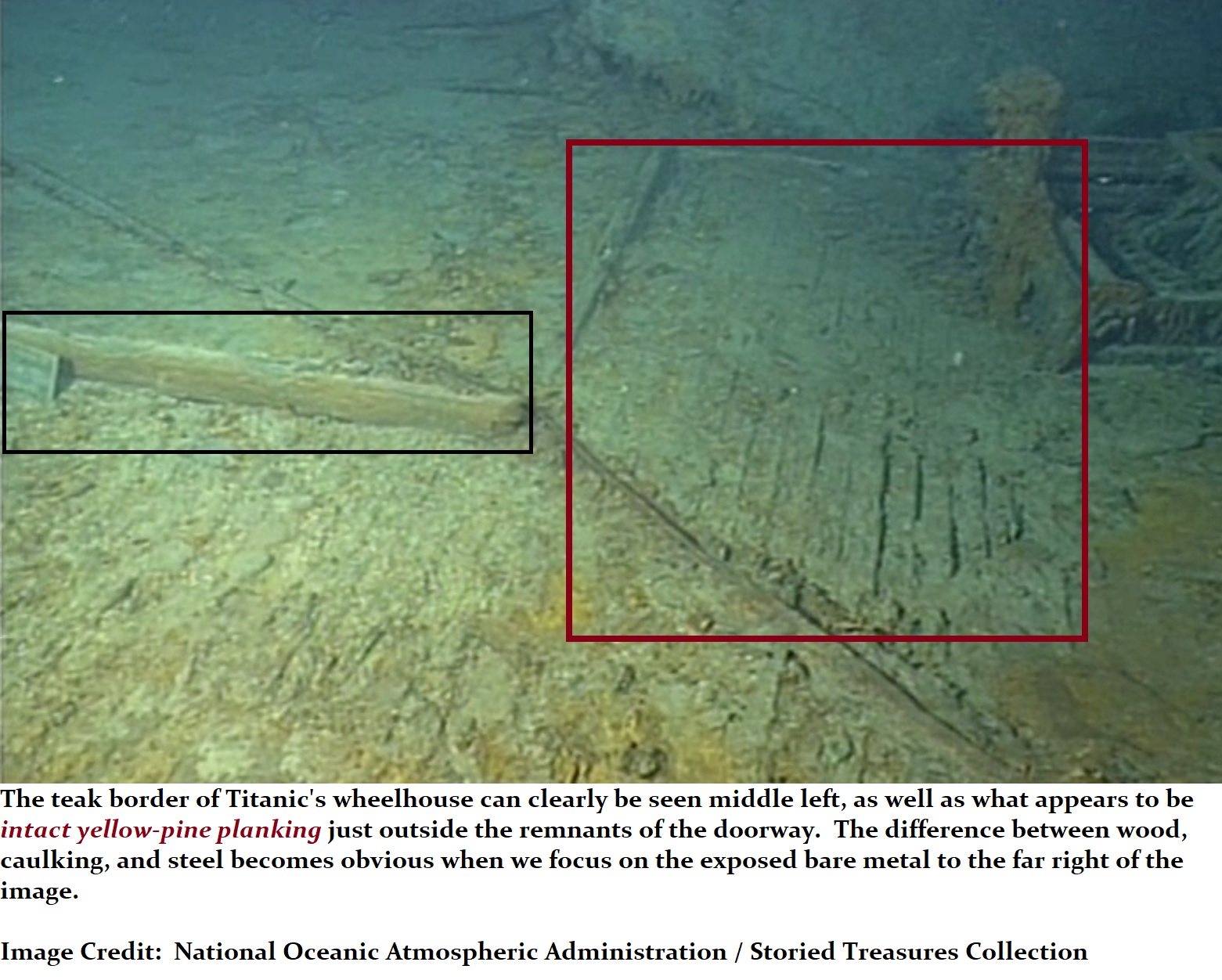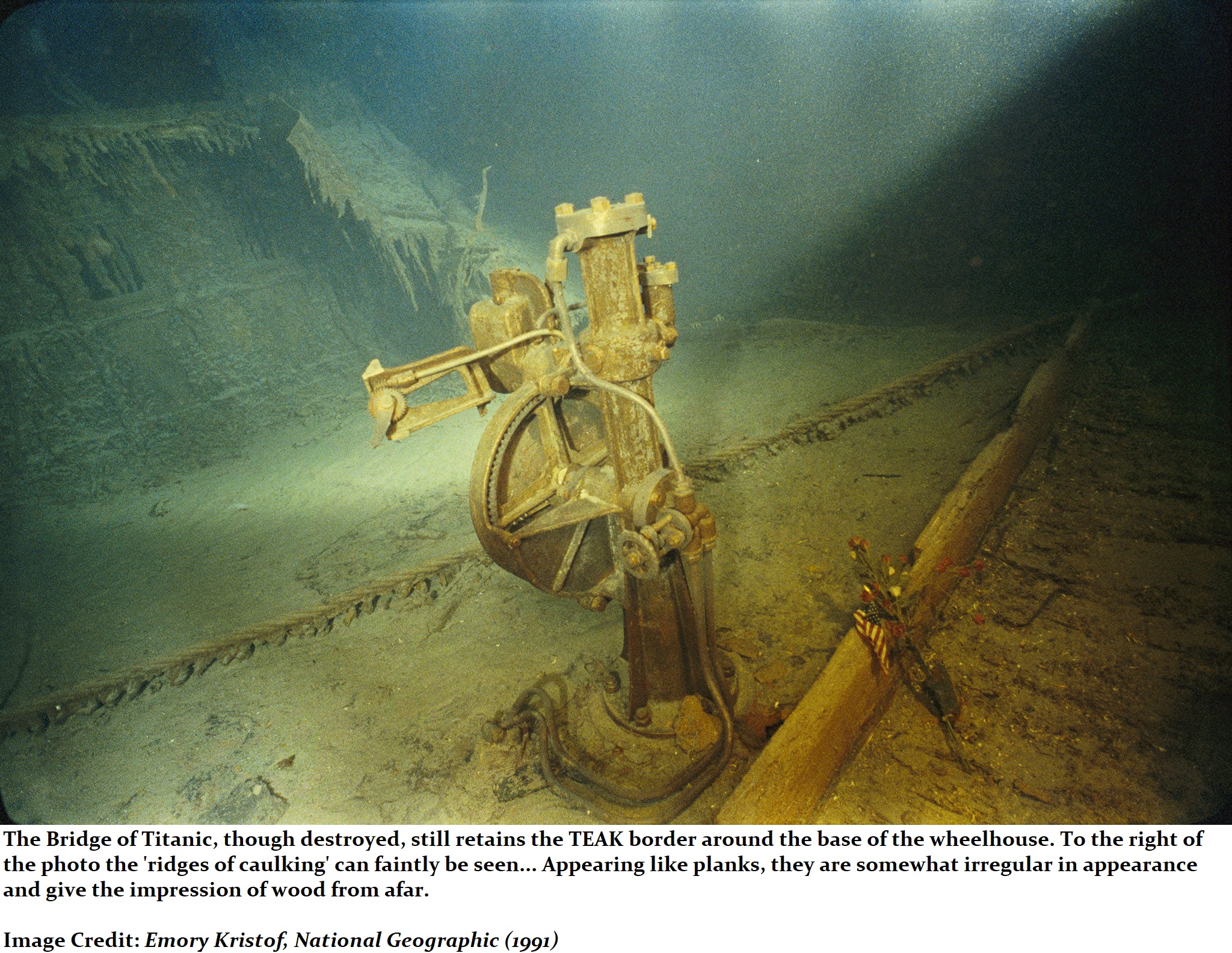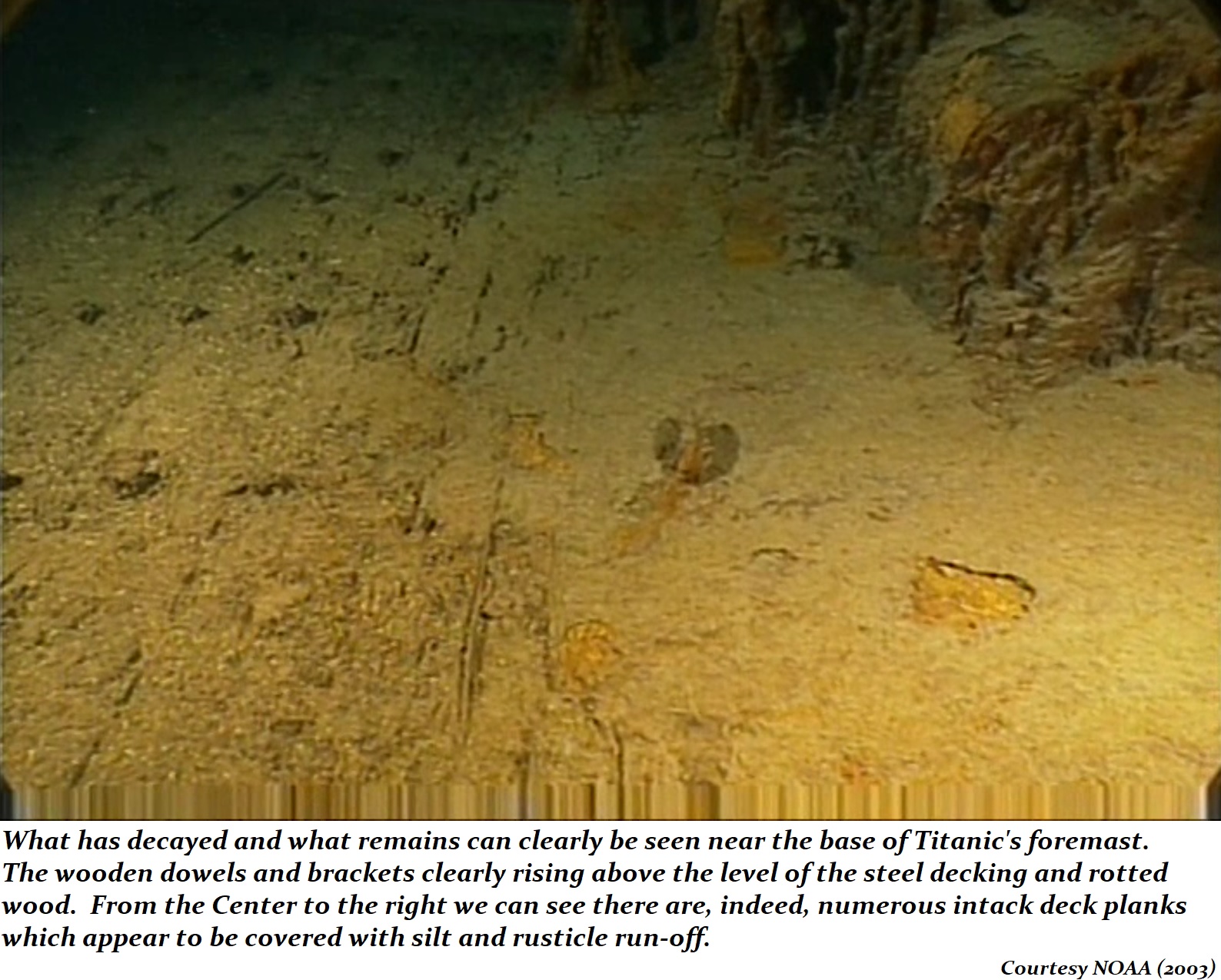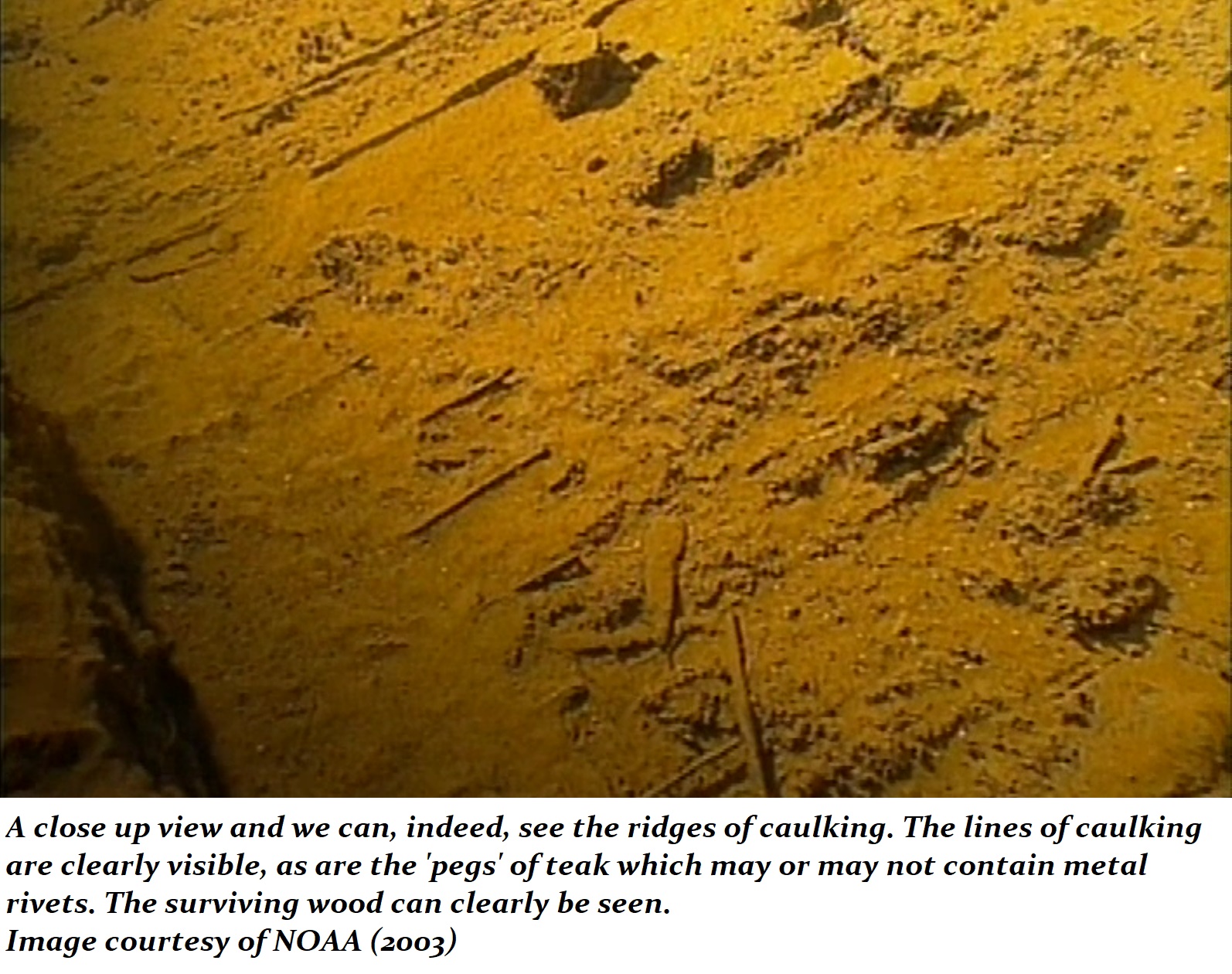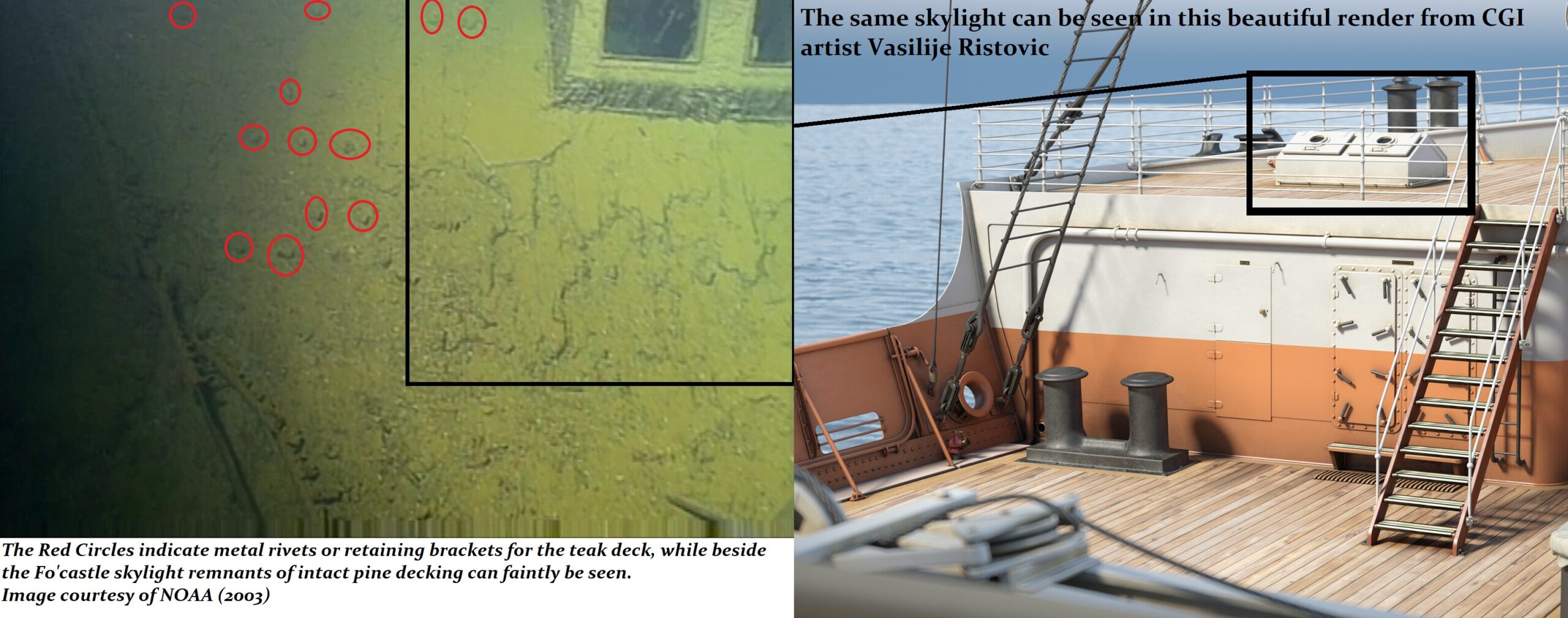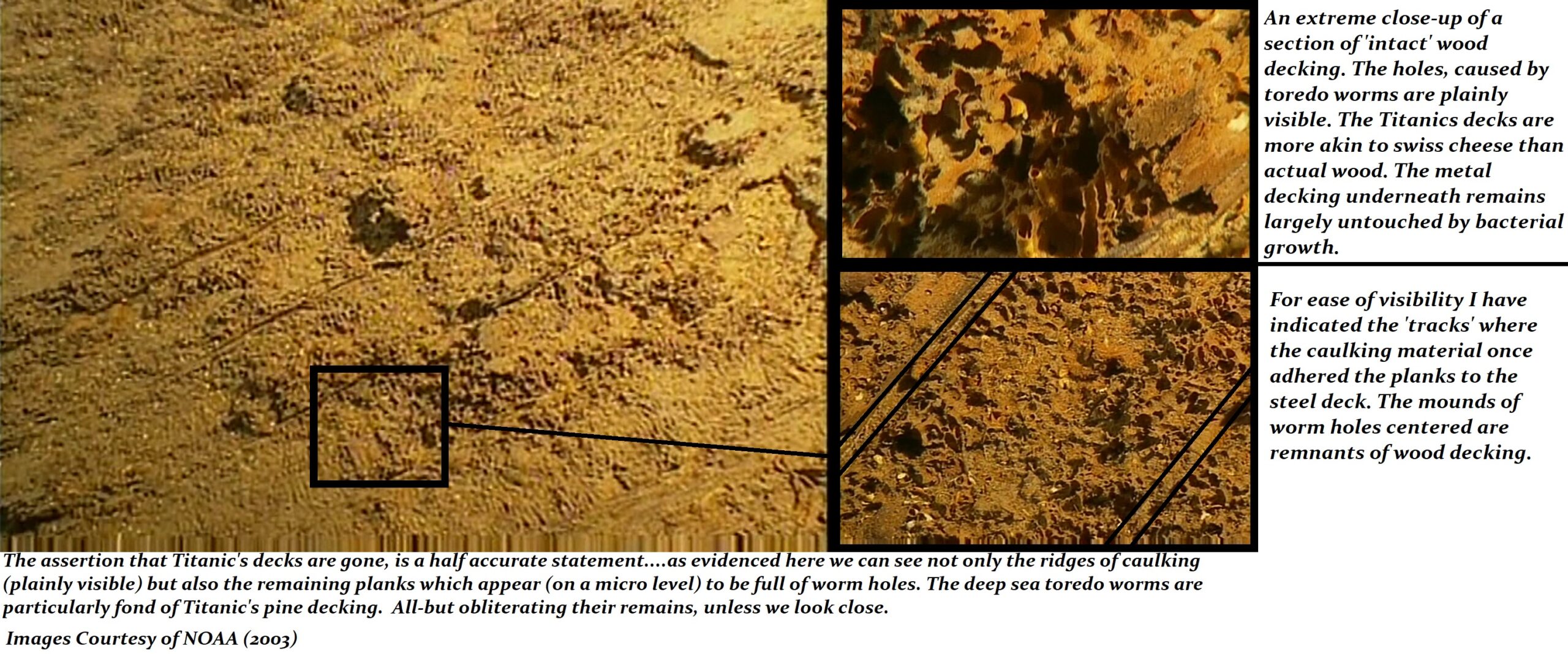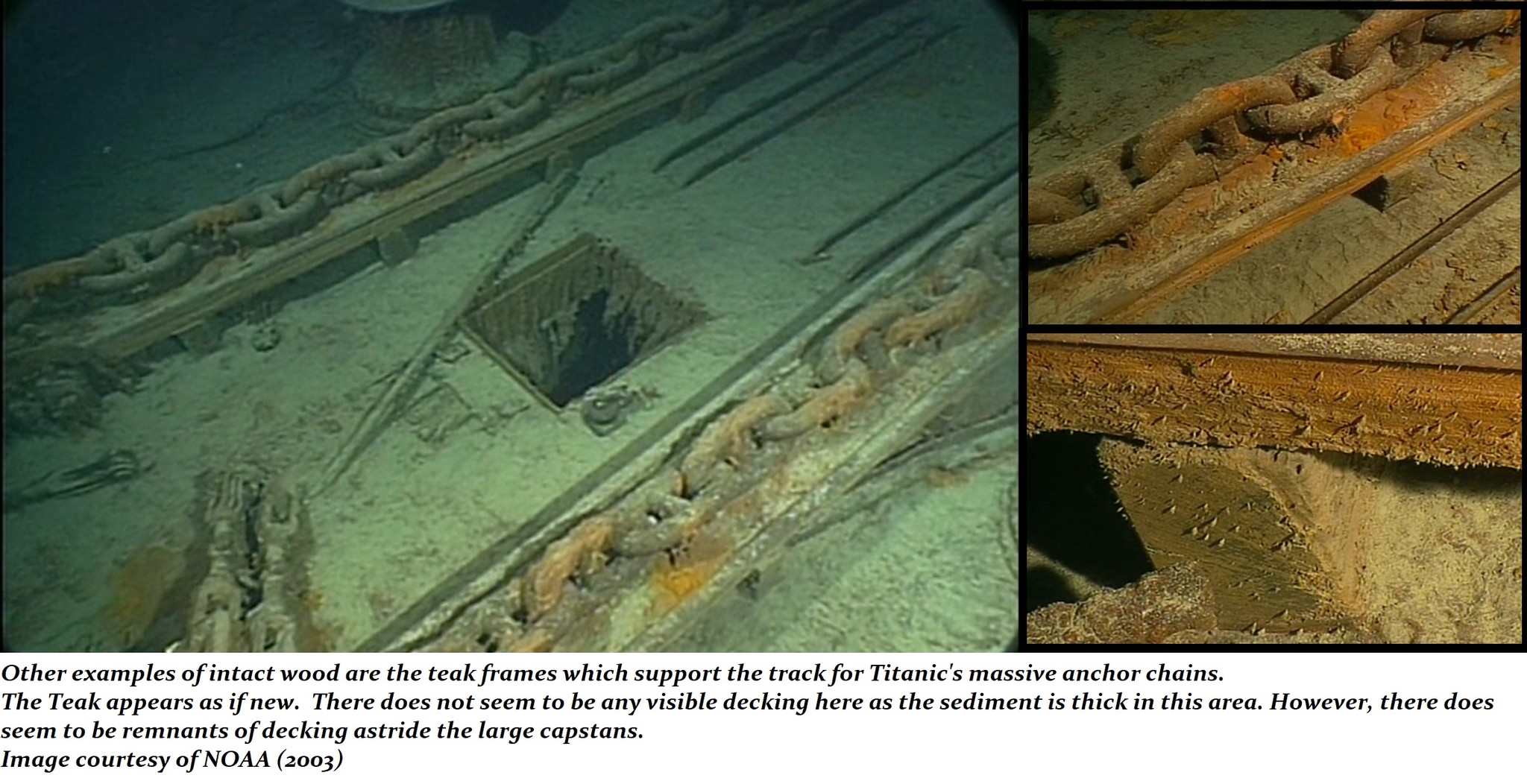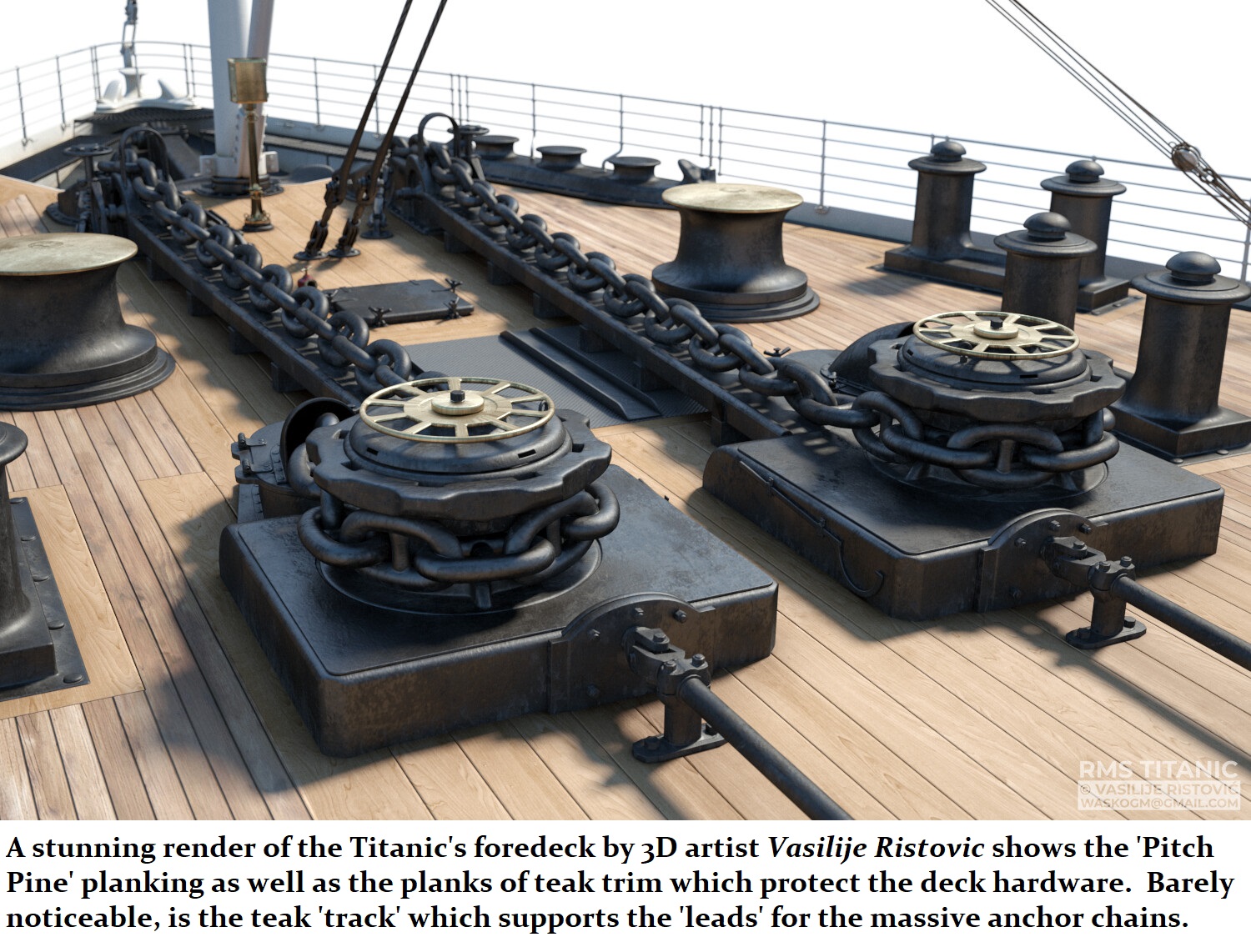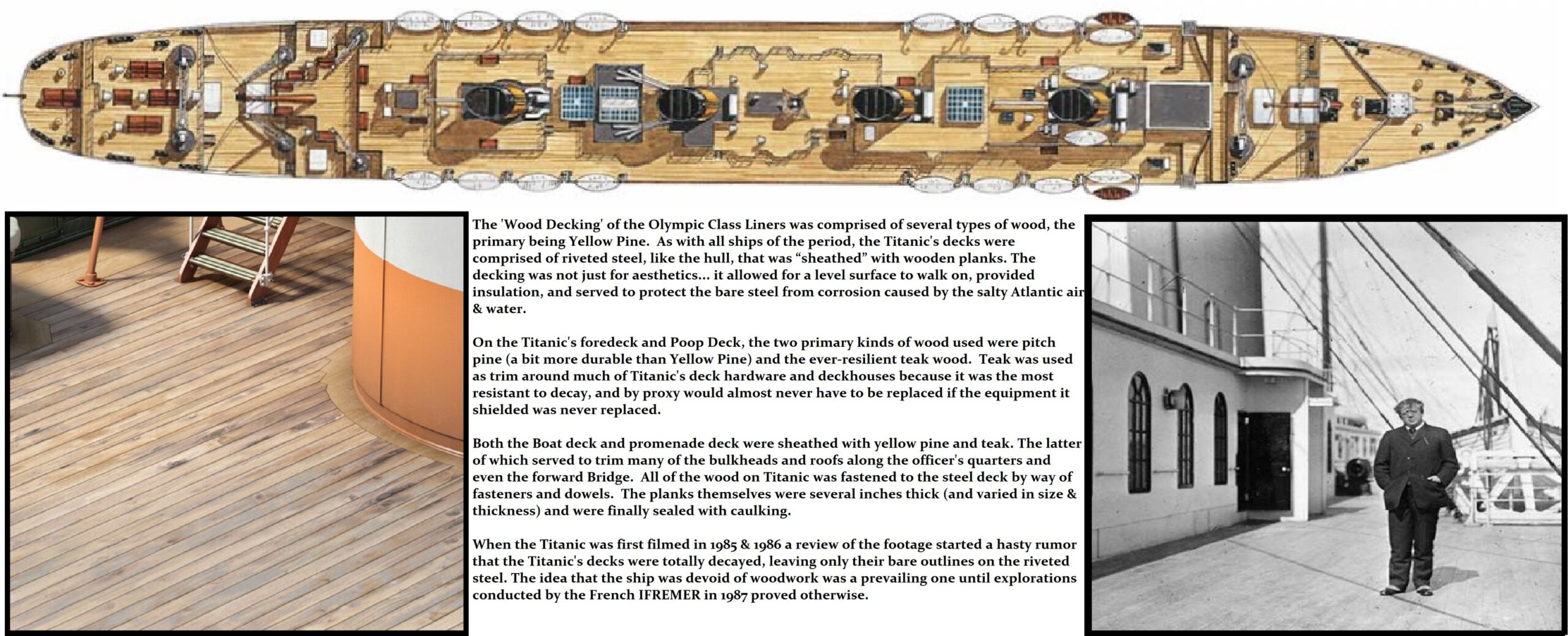Wreck Thursday: The Decks of a Legend
One of the oft-overlooked, (and taken for granted) details concerning the wreck of Titanic has been the lack of visible ‘Wood’ on the great liners’ upper decks.
The Olympic Class Liners had decking that was comprised of several types of wood, the primary of which was Yellow Pine, the others being Pitch Pine, and of course Teak. Much like all ships of the period (and even those today), the Titanic’s decks were comprised of steel that was “sheathed” with wooden planking. The decking was not just for aesthetics… it also allowed for a level, safe, surface to walk on, provide insulation, and served to protect the bare steel from corrosion caused by the salty Atlantic air & water.
The Titanic’s foredeck & Aft Poop Deck were sheathed primarily with pitch pine (a bit more durable than Yellow Pine) and the ever-resilient teak wood, which was used as trim around much of the liners deck hardware. Both the Boat deck and promenade deck were sheathed with yellow pine and teak, the latter of which trimmed many of the bulkheads and roofs along the officer’s quarters and even the forward Bridge. Teak was the most resistant to decay, and by proxy, it would almost assuredly never have to be replaced unless the equipment it shielded was ever replaced or removed.
All of the wood on Titanic was fastened to the steel deck by way of fasteners and dowels. The planks themselves were several inches thick (and varied in size & thickness) and were finally sealed with caulking.
When the Titanic was first filmed in 1985 & 1986 a review of the footage started a hasty rumor that the Titanic’s decks were totally decayed, leaving only their bare outlines on the riveted steel. A review of the available footage came to the conclusion that much of what was seen was, in fact, “Ridges of caulking” as opposed to physical wood planks. Thus the rumor began that the great liner was simply a metal shell, devoid of all form of woodwork. This idea prevailed until the 1987 French IFREMER expedition sent cameras deeper inside Titanic than had been attempted by Dr. Robert Ballard and his camera ‘Jason Junior’ (J.J.).
Subsequent explorations conducted to the wreck of Titanic have proven these rumors to be false, and as we shall now see… much of Titanic’s deck still remains to be seen and examined.
Lets take a look for ourselves….
Please see images for additional text and information.
Post by:
Matthew Smathers
Information & Images Courtesy Of:
Encyclopedia Titanica,
Daniel Klistorner,
NOAA,
Vasilije Ristovic,
Father Browne Collection,
CyArk Archive,
Titanic: The Ship Magnificent,
Bruce Beveridge,
Ken Marschall,
Mark Draper,
Riley Gardner,
Woods Hole Oceanographic Institute,
Rms Titanic Inc.
Storied Treasures Collection,
